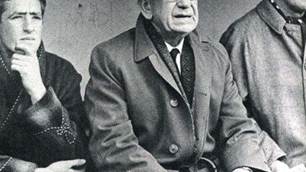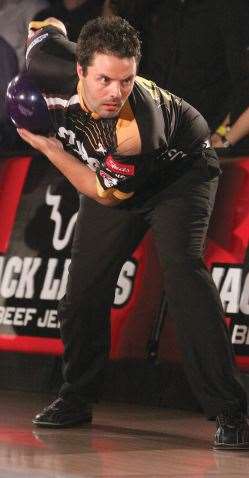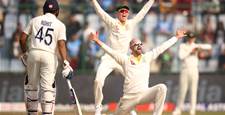Who’d have thought two hands are better than one in ten-pin bowling? Only an Aussie.
Who’d have thought two hands are better than one in ten-pin bowling? Only an Aussie.
When a man’s technique is so revolutionary (so to speak) that it threatens to change his entire sport – a sport that’s been around a long time – and becomes its hope for the future, then he is a true innovator.
Jason Belmonte wasn’t always like that.
When he entered the higher ranks of ten-pin bowling as a rare two-handed bowler, he was a curiosity. The wisdom was that a good one-handed bowler would always be better. Otherwise, people would have bowled two-handed decades ago.
But then Belmonte won the 2002 Commonwealth Games. Then he became the first man ever to score 300 at a World Ten-Pin Masters, in 2005. Then he quit the lucrative European tour and headed for the world headquarters of ten-pin bowling, the USA, where he has become one of its top competitors.
Not long after Belmonte was born, in 1983, his family bought the local bowling alley in Orange, NSW. For little Jason, the alley became his nursery. The rumble of bowling balls and reverberating rattle of ten-pins was the soundtrack of his life. Once he began to walk, he wanted to bowl. Of course, even the lightest of bowling balls is way too heavy for an 18-month-old, and the only way he could launch it down the lane and actually make the other end was to shove it two-handed. As he grew, he saw no reason to stop bowling the way he was used to. He was already beating local champs as a teenager with his action.
At 17, using his “shovel”, Belmonte became the first Australian junior to bowl a perfect 300 outside Australia. After his gold, silver and two bronze medals at the Manchester Games, the bowling world began to take notice. In 2004, he won the prestigious world “Bowler of the Year” title.
In 2007, Belmonte was again invited to the World Ten-Pin Masters, where he’d finished fifth in 2005 (despite that perfect 300). This time he beat England’s Paul Moor in the final, bowling another 300 along the way.
In 2008-09 he joined the Professional Bowlers’ Association circuit in the USA. Two big wins gained him Rookie of the Year status. In November 2011, Belmonte won his second, third and fourth PBA titles, and was just pipped by the USA’s Sean Rash as Player of the Year. He then came home to
defeat Rash in the 2012 Australian Open final.
But 2008-09 was Belmonte’s breakout year in terms of recognition of his technique; 2011-12, his year of greatest success. Right now, however, he contends with crusty US veterans who resist his style. Some even claim his technique will cause physical wear and tear.
Belmonte’s impact on world bowling might be appreciated in a decade’s time. Already a ten- year-old kid from Ohio became the youngest-ever to bowl a 300, using the two-handed technique. Even the PBA’s most acclaimed and decorated player, Walter Ray Williams Jr, has flirted with it.
Belmonte has been joined by another two two-handed bowlers on the world scene, and the USA’s best, Mike Fagan, believes he might have the future of the sport in both hands. “Bowling’s lost its lustre, and I think he could bring it back,” he says.
The Bolivian team have all adopted the two-handed action. Since their coach, Bene Villa, began a program called Proyecto Dos Manos (Project Two Hands) after seeing “Belmo” on YouTube, the Bolivians have improved their scores markedly. The bowling world is watching this experiment intently.
The Belmonte “revolution” has led to scientific studies, which have discovered that he gets more spin on a ball than anyone has ever witnessed. His delivery, at around 600 spins per minute, gets around 17 percent more rotation than a one-handed bowler is able to impart. Belmonte has resurrected the debate as to whether spin is what actually makes for a good bowler. Certainly, the torque he gets allows him to cling precariously to the gutter before the ball spits into the pocket, and according to well-credentialled coaches like the USA’s John Jowdy, “When it hits the pocket, it’s curtains. That ball is very destructive.” He’s right. The pins scatter and ricochet that little bit more violently, reducing the possibility of difficult spares.
The US Bowling Congress has studied Belmonte’s bodily mechanics in an effort to teach two-handed bowling to coaches, many of whom have never encountered it, despite decades in the game. Right now, it seems there is no “orthodox” way to do it. Belmonte has his right-hand pinky and his thumb in the holes. Other right-handers might have the fingers of their left hand in the holes. It’s conceivable that balls will, for the first time ever, be designed differently to accommodate the new style as it catches on.
Belmonte’s action is one of few instances in any sport (Dick Fosbury’s flop is another) of a single competitor’s action changing the approach of others, and affecting accepted notions of technique forever. For that reason alone, “Belmo” is already a legend of the game.
Related Articles

Denise bowls 'em over at Masters

What it’s like: Olympian Dianne Alagich














